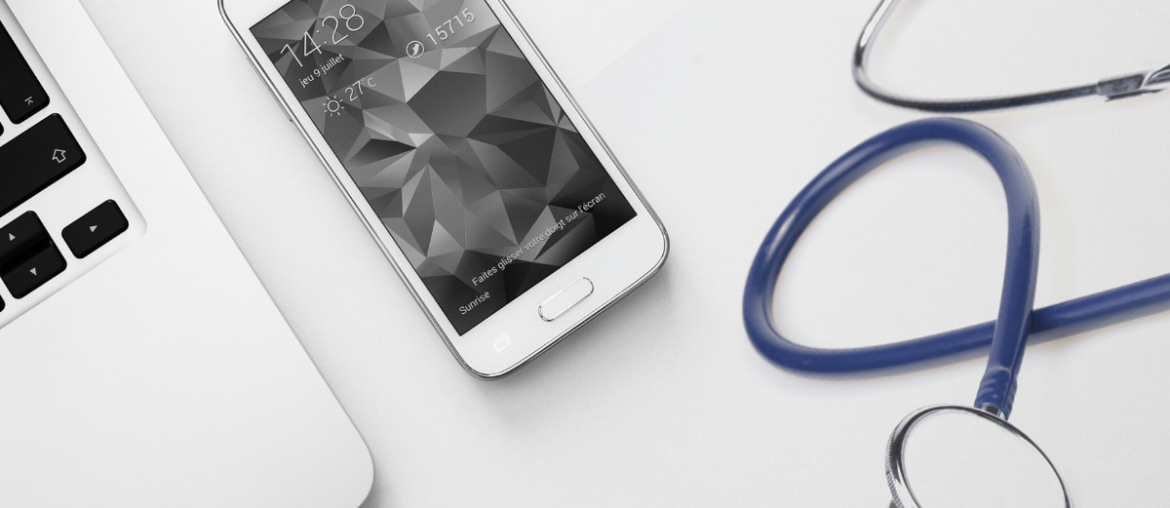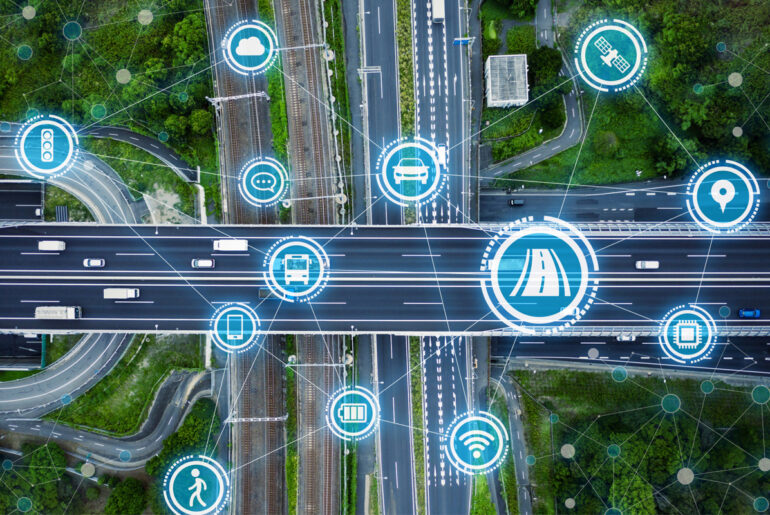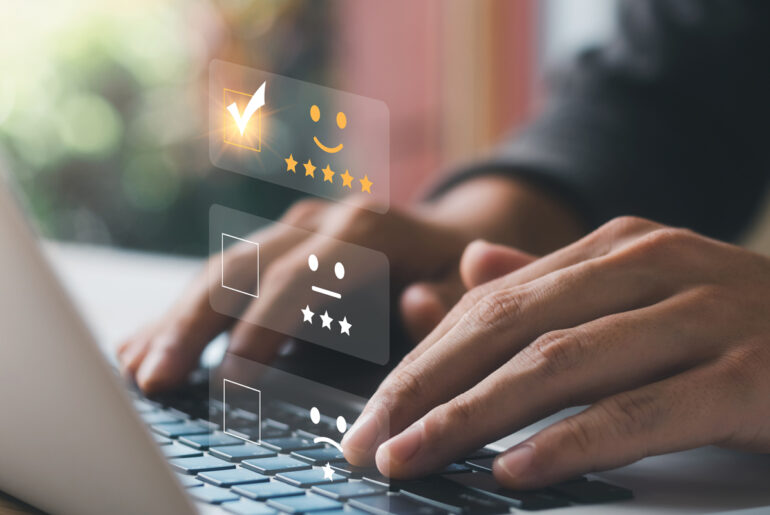According to a 2019 Pew Research study, “older Americans spend over half of their waking hours alone.” This can pose major concerns for seniors who are at risk of falling, wandering, or having a sudden health emergency, such as a heart attack or stroke. Family and friends looking for ways to protect their loved ones while still giving them that level of independence they need may benefit from telehealth products and services.
Advantages of Telehealth for Seniors
Advances in telehealth have made healthcare more accessible and affordable for everybody, especially seniors. Traditional barriers facing seniors make it significantly harder to obtain proper healthcare services.Faced with the inability to drive or other challenges with transportation, going in-person to a hospital or doctor’s office can be stressful or near impossible. Going in-person can also be inconvenient for caregivers. Those extra hours spent transporting their patient back and forth to appointments can add up. Telehealth can diminish that stress for both patient and caregiver alike, as well as reduce costs and time.
Modes and Applications for Telehealth
There are various applications for telehealth. Such a variety means that there’s a product or service for everyone. With new levels of personalization, seniors can receive more of the medical services they need at the touch of a button.
Synchronous Telehealth
Synchronous telehealth can also be thought of as live video-conferencing. This type of telehealth provides a real-time, direct connection between patient and provider. Uses of synchronous telehealth include initial appointments, check-ups, and more.
For instance, synchronous telehealth can be used to triage new symptoms in real-time for patients with chronic diseases, or who have recently been discharged from the hospital. If a new symptom were to appear, patients could easily phone their provider and receive a video consultation. Another implementation for synchronous telehealth includes the ability to connect with specialists who are not available locally.
Asynchronous Telehealth
Asynchronous telehealth takes place outside of real-time. The practice can also be thought of as “store-and-forward video conferencing.” In this mode of telehealth the provider will acquire all of a patient’s necessary medical documents, and then send those to a specialist to follow up when convenient.
For instance, patients can simply go to their local clinic to receive medical images, blood testing, or a pathology report, and then those can be sent forth for specialist review. Results and information can then be faxed or electronically returned to the local provider.
Remote Patient Monitoring (RPM)
Remote patient monitoring, or RPM, is a method of healthcare delivery similar to asynchronous telehealthcare. This type of telehealth allows patient data to be collected in one location and sent to a provider in another location.
RPM has many benefits. For instance, it is useful for patients released from the hospital into a senior care facility or at-home care. These patients could be deemed high-risk, making it important for providers to have the ability to perform consistent wellness checks.
Another use is for seniors with chronic diseases, such as type 2 diabetes, cancer, or heart disease. A patient with heart disease on a strict diet and exercise regimen, for instance, could be routinely monitored to confirm they are following treatment guidelines.
Wearables and Apps
The concurrent rise in healthcare-based apps and wearable technology is shaping a whole new kind of telehealth. These products personalize care and expand access to services. Healthcare-based apps include ones such as Teladoc, GoodRx Pro, and Doctor on Demand. Wearable devices include fitness bands and smartwatches.
Apps allow you to check symptoms, schedule appointments, learn about diseases or conditions, and stay connected to healthcare providers 24/7. Wearable devices make it possible to monitor your sleep cycles, check your blood pressure or heart rate, as well as send such information to your providers.
Aging-In-Place Technology
The CDC defines aging-in-place as “The ability to live in one’s own home and community safely, independently, and comfortably, regardless of age, income, or ability level.” Aging-in-place technology, as such, supports that notion.
MedMinder
MedMinder is a company that sells pill dispensers with reminder and notification features. A MedMinder dispenser provides seniors more autonomy by ensuring medications are taken at the right time and in the correct dosage. The company sells both locking and non-locking products.
Pill dispensers sold by MedMinder also come equipped with features such as daily weather updates and the ability to upload family photos. As of 2020, you can purchase MedMinder’s pill dispenser for $49.99 and receive free standard shipping.
GrandCare Systems
GrandCare Systems equips caregivers and patients with a remote monitoring tool that is accessed through an easy-to-use touchscreen device. The tool allows seniors to stay connected with caregivers, family, doctors, and other providers. It is also capable of setting medication reminders, sharing messages and multimedia content, and giving other kinds of notifications.
Sensors can also be placed around a home or facility and connected to the touchscreen device. These sensors make it possible for caregivers or providers to monitor a patient’s sleep cycle or detect motion. The ability to monitor sleep cycles lets caregivers establish healthy sleep cycles for seniors, while the detection of motion can tell when the fridge or door has been opened. The service also features HIPAA compliant video-conferencing, giving seniors access to synchronous telehealth.
Life Alert
Life Alert is a durable, waterproof, medical-alert system that can be worn on the wrist, as a necklace, or placed on a wall or table. Connected to the local emergency response center, users only need to press a button to signal for help. The system is designed to let seniors live independently while ensuring that if a health emergency were to occur, word would still get out to first responders.
Reminder Rosie
Reminder Rosie is a voice-activated, digital alarm clock. The device’s daily reminders are designed to help seniors stay on task. It is a great device for seniors with memory issues. Reminder Rosie can remember anything from medication schedules and doctor appointments to birthdays and favorite activities.
As of 2020, you can purchase Reminder Rosie for $109.99, plus shipping.
VitalTech
VitalTech is a company that provides a variety of digital healthcare solutions. Working off of a cloud-based platform, VitalTech supports real-time monitoring, data collection, and user engagement.
One VitalTech product is the wearable Vitalband, designed with fall detection, emergency voice call out, and heart and respiration tracking capabilities. Another product is the ADL ActivityTag, made specifically for remote monitoring. Each product contains medical-grade biosensors ensuring connected care.
Other Resources and Services to Support Senior Wellness
Below are some other resources and services that let you support senior independence and wellbeing at home.
Prescription Delivery
Prescription delivery services were designed to eliminate the need to wait in a line or sit at a drive-thru. Customers can instead have their prescriptions delivered directly to their homes. This is incredibly beneficial to seniors who may struggle to get around on their own and have limited access to transportation.
Prescription delivery services for senior include:
- PillPack: Owned and operated by Amazon, PillPack delivers medications directly to your door. The service is covered by many insurance providers and most forms of Medicare and Medicaid — and delivery is free.
- ZipDrug: ZipDrug is designed specifically for Medicaid insurance holders. Not only does the company offer prescription deliveries, but it also helps provide more affordable medications to its members. The drawback is that ZipDrug is only available in about half of the U.S.
- Walgreens: Specific drug stores, such as Walgreens, also offer their own delivery services. At Walgreens customers receive free standard shipping on prescription deliveries.
- CVS: CVS is another drugstore featuring their own prescription delivery services. The company also allows you to order other products commonly found in their stores, such as toiletries, food, and over-the-counter medications. Delivery is free.
At-Home Caregivers
Hiring an at-home caregiver or a Certified Nursing Assistant (CNA) can improve the quality of life of seniors and ease worries surrounding their wellbeing. Caregivers help stay on top of chronic conditions, provide a social outlet, and drive patients to doctor’s appointments and other occasions. You can also hire a caregiver as needed, whether that is for daily or weekly tasks or on more sporadic occasions.
Grocery and Meal Delivery
Again, grocery and meal delivery services are ideal for seniors with limited mobility. And groceries are essential items to have, making it important to know what services are available to your loved ones.
Grocery and meal delivery services include:
- Instacart: Instacart is a grocery delivery service partnered with a variety of grocery stores across the country, such as Aldi, Big Y, Sam’s Club, and Costco.
- HelloFresh: HelloFresh delivers weekly boxes full of fresh, pre-measured ingredients and easy-to-follow recipes. This service is ideal for seniors capable of preparing dinner each night.
- Blue Apron: Blue Apron is another meal kit delivery service, equipped with ingredients and recipes.
- Meals on Wheels: Meals on Wheels is a free-to-no-cost program designed for individuals who cannot afford to purchase or prepare their own meals.
These services are possible through route management software. This kind of software reduces operational costs and increases delivery efficiency, ensuring that your loved ones’ essential goods get delivered safely and on time.
SmartHome Technology
When it comes to the different types of Smarthome technologies, you can find anything from smart door cameras and lights to smart vacuums and voice assistants.
- Ring: Ring offers a smart doorbell camera. With Ring, you can check who is at your loved one’s door whether you’re physically there or not.
- Philips Hue Smart Lights: Philips Hue Smart Lights let you control your home’s lighting from your phone. This can be very convenient for seniors with limited mobility.
- Voice Assistants: Voice assistants, such as Alexa or Google Home, can answer questions, send you reminders, play music, or make calls. These can help seniors with simple tasks such as finding out what the weather is like or remembering an important event.
Delivery For Other Essentials
Other services for sending essentials to your loved ones include:
- Hello Subscription: Hello Subscription compiles a wide array of different goodie boxes to send to your seniors. Boxes may include books, snacks, puzzles, and other miscellaneous items.
- Instacart: Instacart, as previously discussed, can also deliver essentials such as toiletries, over-the-counter medications, household items, and pet food or treats.
Personal GPS
A personal GPS is designed to stay on a person’s body; they are especially helpful for seniors prone to wandering (due to Alzheimer’s or dementia) or at risk due to other pre-existing health conditions.
Caregivers and loved ones can provide their seniors with the products by Grandcare Systems and VitalTech, as previously mentioned, or with the following devices:
- PocketFinder: PocketFinder lets providers, family members, and loved ones keep track of seniors. The company also makes a vehicle tracker for seniors who drive.
- Medical Guardian: Medical Guardian sells medical alert devices with built-in GPS trackers. Their products are budget-friendly and easy to install.
The same advanced technology powering GPS tracking that allows organizations to monitor delivery vehicles and packages also allows family and caregivers to keep tabs on their loved one, locate vehicles in real-time, and pinpoint locations immediately.
Transportation/Shuttle Services
Many areas have senior-specific shuttle services. This kind of access to reliable transportation keeps seniors connected with friends and family, as well as their doctors and other providers — not to mention, grocery and drug stores too. With the help of a routing engine, these services run with ease and efficiency. They provide the quickest and most efficient routes while helping your seniors get to where they need to go.
Transportation and shuttle services for seniors include:
- GoGoGrandparent: GoGoGrandparent is a third-party service designed to make using apps, such as Lyft and Uber, easier for seniors. The service also supports DoorDash, Grubhub, and other delivery-based apps.
- iTNAmerica: iTNAmerica is a national senior transportation network. Designed specifically for seniors, iTNAmerica provides reliable transportation to doctor’s appointments, grocery stores, drug stores, trips to see friends or family, and more. The service extends to only 12 states in the U.S, with limited availability in those particular states.
- Veyo: Veyo provides non-emergency medical transportation services for seniors. The service is also covered by certain insurance providers.




